Dusky Bird – 1/3 – Research
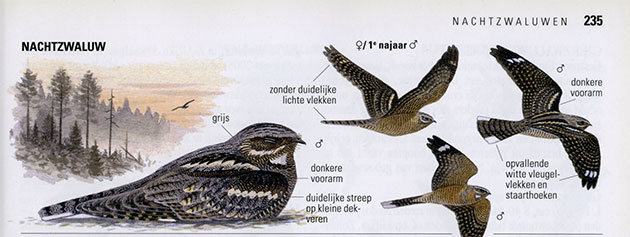 Nachtzwaluw, image from Burton P. (1977). Het vogelboek. (Illustraties Peter Hayman et al).
Nachtzwaluw, image from Burton P. (1977). Het vogelboek. (Illustraties Peter Hayman et al).
Research for Dusky Bird, part of the 2016 Grind the Gap project.
Last summer, after I started working in the Arnhem area, I became fascinated with a strange creature that can be found at cycling distance from my studio: the nightjar.
Nightjars are beautiful birds with enormous gapes and complex
camouflaged plumage. Only one type, Caprimulgus europaeus, lives in almost all of Europe. In the Netherlands, it’s a summer bird of open, dry heath fields, open spaces in the forest and young afforestations.
At dusk and dawn, when the birds are most active, the male birds reveal their presence by their sonorous song: a dry vibrating sound like a running machine that changes tone regularly.
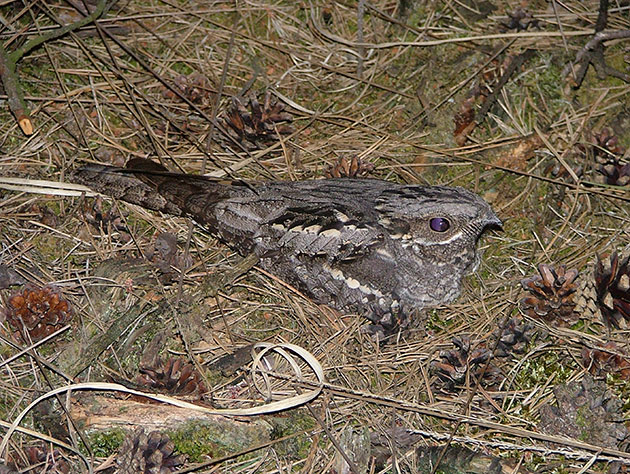
Nightjar female on nest. Photography Pieter Wouters.
The nightjar’s nest: the two eggs are placed between ferns or heath or simply on the naked ground. The closed eyes form slits that are part of the mimicry. On the ground, or resting along a branch of a tree, the nightjar is hardly visible for both human beings and predators.
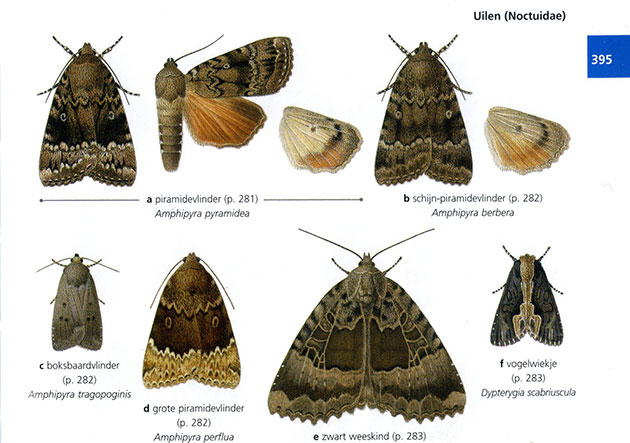
Potential preys for the nightjar, from Waring P. & Townsend M. (2015). Nachtvlinders, Nieuwe veldgids voor Nederland en België. (Illustrations Richard Lewington)
Insects that fly around during the nightly shimmering, are a rich source of food. Nightjars are the only birds that have occupied this niche. Compared to butterflies, moths generally fly at night, have less striking colors but nevertheless complex and intricate graphic patterns.
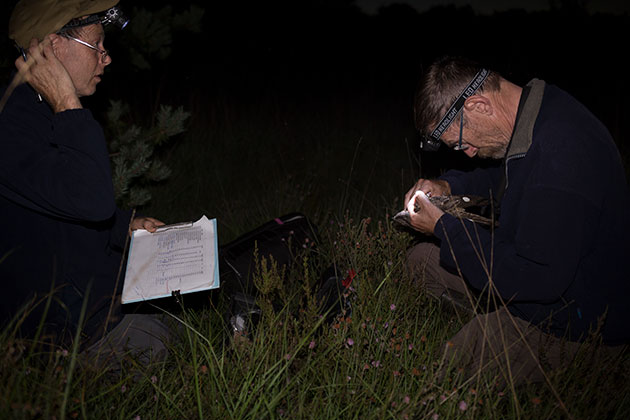
Pieter Wouters (left) and his brother Jan ringing a male nightjar at the Netelse Heide.
Through Vogelwerkgroep Arnhem and Vereniging Sovon Vogelonderzoek I got in touch with Pieter Wouters in Reusel. Pieter contributes to the Retrapping Adults for Survival (RAS)-project, ringen project initiatief by Vogeltrekstation (National centre for birdmigration and -demography in Arnhem) that is specifically focussed on monitoring of the survival of breeding birds in the Netherlands. June18 , I was allowed to join him catching nightjars in De Kempen.
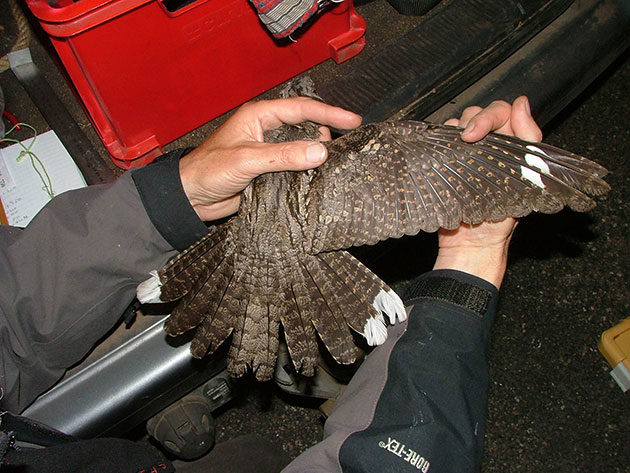
A male nighjar can be recognized by the large white spots on wingtips and tail. Photography Pieter Wouters.
The ringers start out around 21.00 hrs. After they agree on the catching location, the ultra thin and hardly visible mistnet is being set up. This is a safe and effective method for catching birds, provided it’s being operated by ringers who have been trained to use it.
The birds are lured to the net through recorded nightjar song, mainly attracting male birds trying to defend their own territory. Caught birds are then measured, weighed and photographed. Unringed birds are ringed. Depending on the procedure, the birds are set free after 5 to 10 minutes.